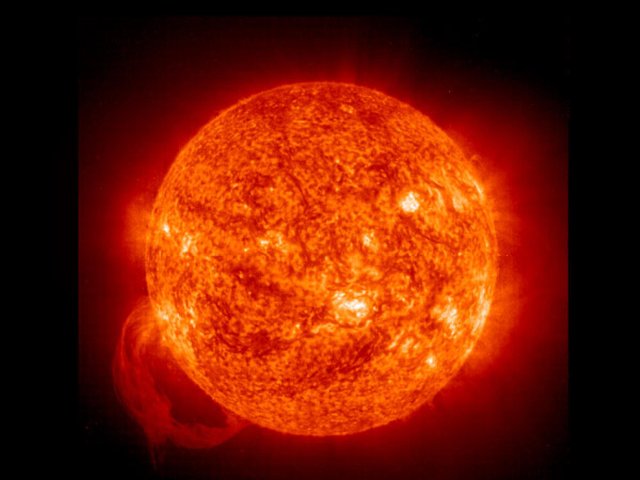Red Giant Stars: Facts, Definition & the Future of the Sun
![]()
A red giant star is a dying star in the last stages of stellar evolution. In only a few billion years, our own sun will turn into a red giant star, expand and engulf the inner planets, possibly even Earth. What does the future hold for the light of our solar system and others like it?
Forming a giant
Most of the stars in the universe are main sequence stars — those converting hydrogen into helium via nuclear fusion. A main sequence star may have a mass between a third to eight times that of the sun and eventually burn through the hydrogen in its core. Over its life, the outward pressure of fusion has balanced against the inward pressure of gravity. Once the fusion stops, gravity takes the lead and compresses the star smaller and tighter.
Temperatures increase with the contraction, eventually reaching levels where helium is able to fuse into carbon. Depending on the mass of the star, the helium burning might be gradual or might begin with an explosive flash. The energy produced by the helium fusion causes the star to expand outward to many times its original size.

Red giant stars reach sizes of 100 million to 1 billion kilometers in diameter (62 million to 621 million miles), 100 to 1,000 times the size of the sun today. Because the energy is spread across a larger area, surface temperatures are actually cooler, reaching only 2,200 to 3,200 degrees Celsius (4,000 to 5,800 degrees Fahrenheit), a little over half as hot as the sun. This temperature change causes stars to shine in the redder part of the spectrum, leading to the name red giant, though they are often more orangish in appearance
The future of the sun
In approximately 5 billion years, the sun will begin the helium-burning process, turning into a red giant star. When it expands, its outer layers will consume Mercury and Venus, and reach Earth. Scientists are still debating whether or not our planet will be engulfed, or whether it will orbit dangerously close to the dimmer star. Either way, life as we know it on Earth will cease to exist.
The changing sun may provide hope to other planets, however. When stars morph into red giants, they change the habitable zones of their system. The habitable zone is the region where liquid water can exist, considered by most scientists to be the area ripe for life to evolve. Because a star remains a red giant for approximately a billion years, it may be possible for life to arise on bodies in the outer solar system, which will be closer to the sun.
The window of opportunity will only be open briefly, however. When the sun and other smaller stars shrinks back down to a white dwarf, the life-giving light will dissipate. And supernovae from larger stars could present other habitability issues.

source file : https://www.space.com/22471-red-giant-stars.html